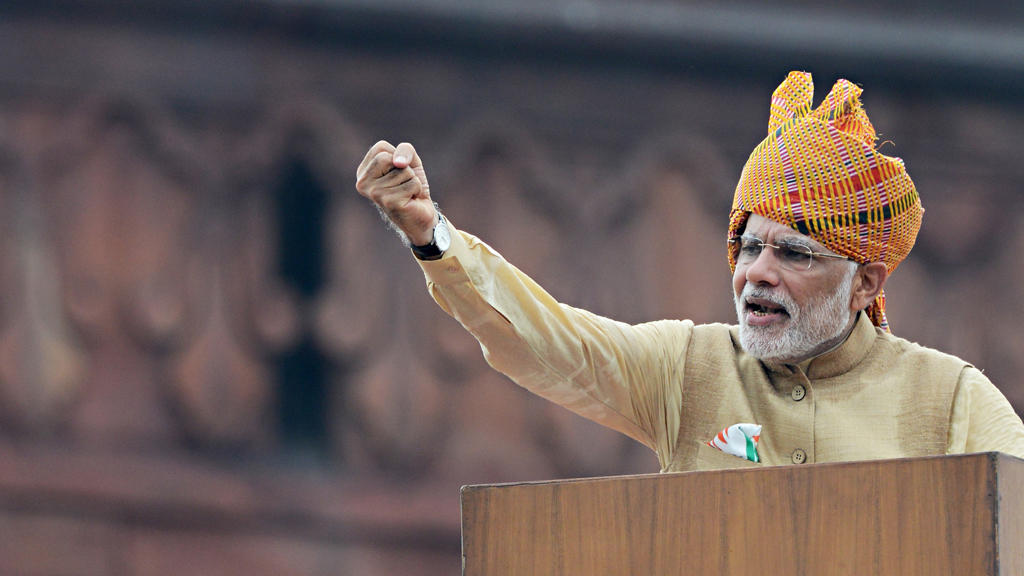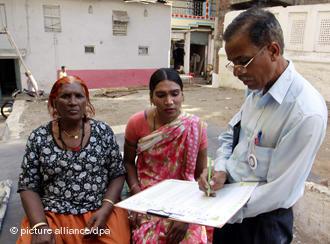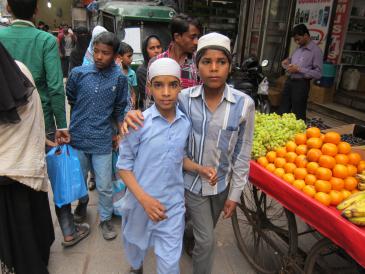Why census data is a priority political issue

Relations between India′s majority population and the country′s largest minority have historically been extremely strained. Memories of violence and expulsion, not to mention ongoing discrimination, fuel tension in the relations between Hindus and Muslims. In addition, suspicions and prejudices continue to exist on both sides, and these are constantly nurtured by new sources of antagonism.
Observers explain the delay in releasing these sensitive statistics as having to do with the upcoming elections. In just a few weeks, the northern Indian state of Bihar will elect a new state parliament. The poll is regarded as the most important domestic political event of the year. According to the opposition, the ruling Hindu nationalist Bharatiya Janata Party (BJP) in New Delhi, headed by Prime Minister Narendra Modi, has undertaken a massive drive to win control of Bihar and is more than willing to employ the data on religion to win votes. This would not be the first time that Modi′s party has attempted to mobilise the Hindu majority in an election through the use of religious propaganda.
A treasure trove for sociologists and demographers
It is particularly striking that the authorities in charge of the statistics have not issued any explanation for the delay in publication and, in addition, have published the data on the Internet without providing any analysis. This is astonishing, as the figures are a veritable treasure trove for sociologists, demographers, and all those interested in societal developments in India, especially those dealing with the links between religion, growth, and social advancement.
The headline currently making the rounds in the Indian media is that the proportion of Hindus in the total population has fallen below 80 percent. According to the census data, the number of Hindus in 2011 was reported to be 79.8 percent of the population, thereby falling under the psychologically significant 80 percent threshold for the first time.

Simultaneously, the proportion of Muslims in the total Indian population rose to 14.2 percent (previously 13.4 percent). In absolute numbers, this means that on the closing date of the population census in 2011, there were 966 million Hindus and 172 million Muslims in India.
Muslim population growth down
There are good reasons why demographers recommend that census date should be considered within a historical context and not merely viewed as a one-time snapshot. An analysis of the Indian figures clearly indicates some revealing and politically significant trends. On the one hand, it is true that a slight decrease in the proportion of Hindus in the total population can be observed. Yet, at the same time, the reduction in the growth rate for Muslims is greater than the corresponding figures for the majority population.
The largest decrease in population growth was registered among Muslims. Their growth in the decade previous to the 2001 census had been recorded as 45.2 percent, whereas ten years later, the growth rate had decreased to 24.6 percent. In other words, the intensity of population growth among Muslims has slowed considerably. The trend of a slower rate of growth has persisted for the past three decades. Before the turn of the millennium, the Muslim population of India showed a regular annual growth rate of 3 percent. In the new millennia, this rate has decreased to 2.5 percent.
Sociologists have been quick to provide an explanation. The decrease in demographic growth is the result of structural social changes with long-term demographic implications. "Elementary school education plays a huge influence in the decreasing fertility rate among Muslims," said Amitabh Kundu from the Centre for the Study of Regional Development in New Delhi in an interview. According to the professor, the scaremongering by the Hindu nationalists, who claim that Muslims will eventually supplant the majority, is absolute nonsense.

"A growing rift"
Amirillah Khan also sees a link between reproductive behaviour and school education. In an interview with The Times of India, the Indian development expert said, "Attending elementary school is the greatest determinant of family size." When Muslim girls go to school at a young age, explains the academic, they correspondingly marry at an older age. "As a result, the first pregnancy is delayed by between three to five years."
This positive message is not welcome among all sectors of the Indian population. Elections are taking place in India. In the confrontation between political parties, populist slogans are clearly more effective than an empirically-based assessment.
The opposition Congress Party, which regards itself as the guardian of Indian secularism, as well as Muslim organisations, have warned that Hindu nationalist zealots will offer a one-sided misrepresentation of the census results. "The BJP will use the results of the 2011 census to polarise (voters)," says Professor Sudha Pai of the Jawaharlal Nehru University in New Delhi. Even the prominent Sunni spiritual leader Maulana Mahali sees little good in the publishing of the statistics, despite their positive signals. "The publishing of the data at the present moment in time is a political trick that will merely serve to widen the growing chasm between both religious communities."
Ronald Meinardus
© Qantara.de 2015
Dr. Ronald Meinardus is head of the South Asia Regional Office of the Friedrich Naumann Foundation for Freedom located in New Delhi.